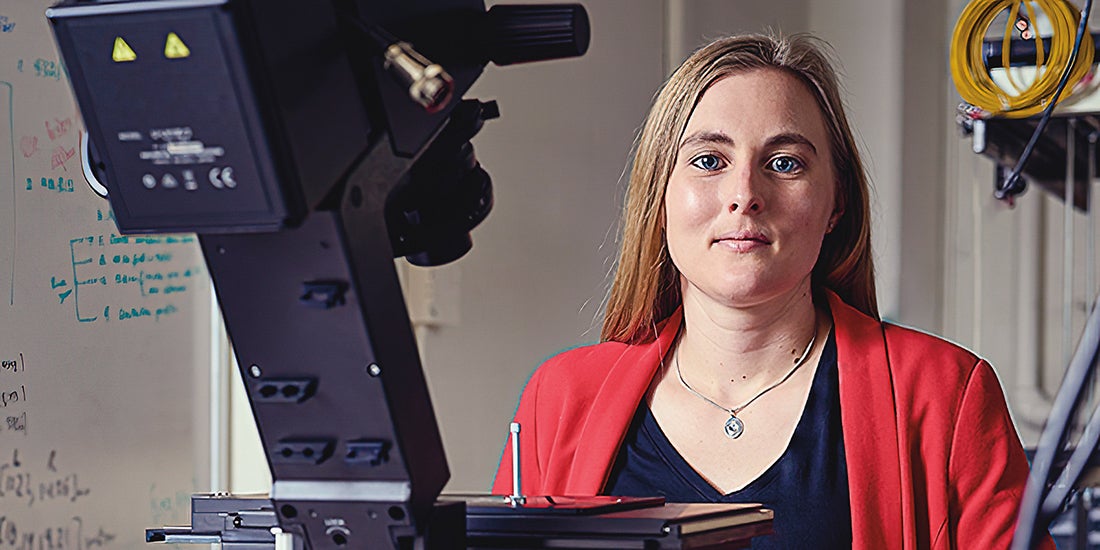lens
Big Ideas at Small Scales
Researchers win federal awards for early-career promise
The National Science Foundation (NSF) awarded prestigious early-career grants in March to two Case Western Reserve University researchers who track the behavior of the smallest particles in pursuit of big scientific gain.
The recipients are Lydia Kisley, PhD, the Warren E. Rupp Assistant Professor in physics, and Svetlana Morozova, PhD, an assistant professor in macromolecular science and engineering.
Kisley specializes in single-molecule microscopy, which involves tracking a single molecule—or many individual molecules—tagged with a fluorescent chemical compound to observe behavior and changes under certain conditions.
 Photo: Roger Mastroanni
Photo: Roger MastroanniLydia Kisley
Supported by a five-year, $625,000 NSF grant, she’ll investigate the chemical underpinnings of how metal corrodes—research with possible applications in areas from solar-energy technology to deteriorating bridges.
Under separate grants, she’s also researching how molecular changes in the area surrounding human cells might affect the progression of diseases such as muscular dystrophy and how seemingly identical prescription drugs can be distinguished at the molecular level—which could potentially improve pharmaceuticals to avoid adverse reactions in patients.
 Photo: Russell LeeSvetlana Morozova
Photo: Russell LeeSvetlana Morozova
“Being able to observe a single molecule is an amazing thing,” Kisley said. “It lets us see rare behaviors that may lead to a material failing that we can only detect because we’re working at this scale.”
Morozova explores the unique properties and possibilities of polymer gels—essentially linked, three-dimensional networks of long-chain molecules.
While gels can be classified as solids because of their crosslinked network, they also are soft and almost entirely composed of a fluid, making them of interest to industrial, scientific and medical researchers.
They are used in a range of products—helping contact lenses conform to the shape of the cornea, for example, or keeping moisture within diapers.
A five-year, $610,000 NSF grant will fund Morozova’s ongoing work, including how gels interact with the surfaces of other materials—whether they are manufactured or natural, such as those in the human body’s cornea and connective tissues.
“Think of these gels as sponges at nanoscale,” Morozova said. “Any sort of energy applied to that sponge can really change the behavior of those materials—and that means there are also many applications.”





